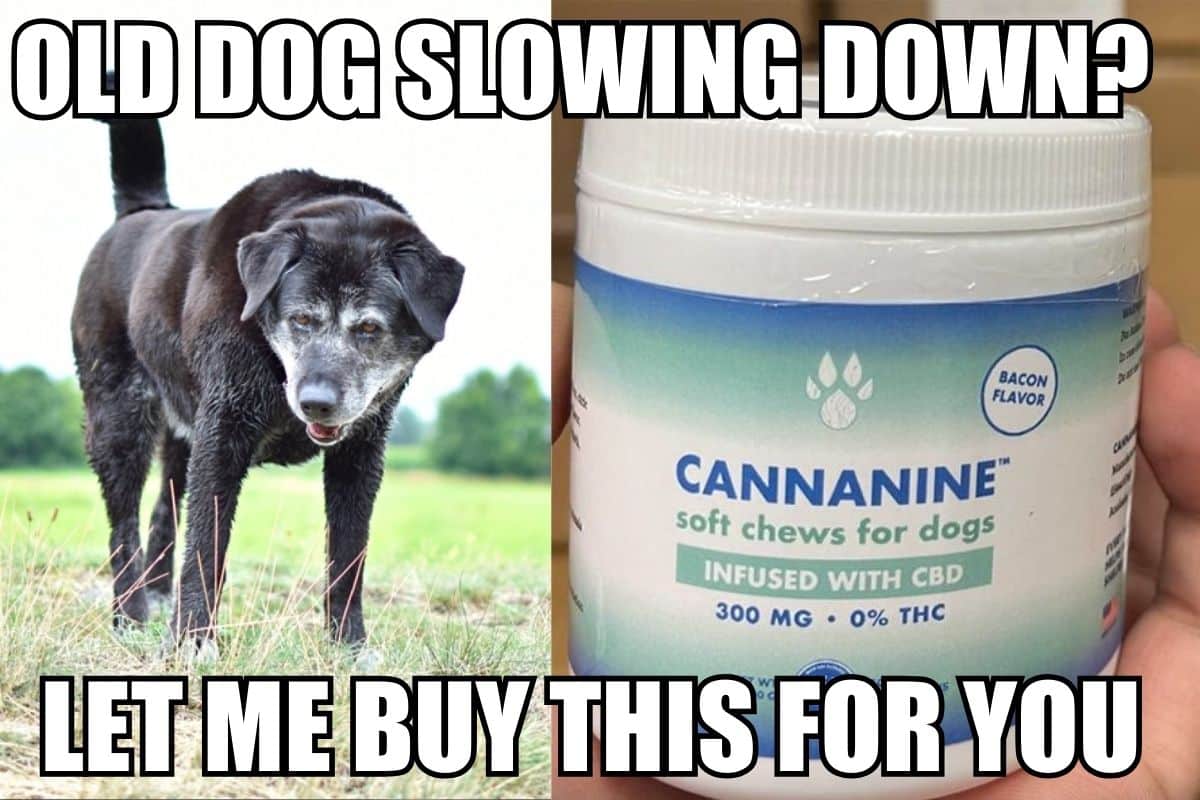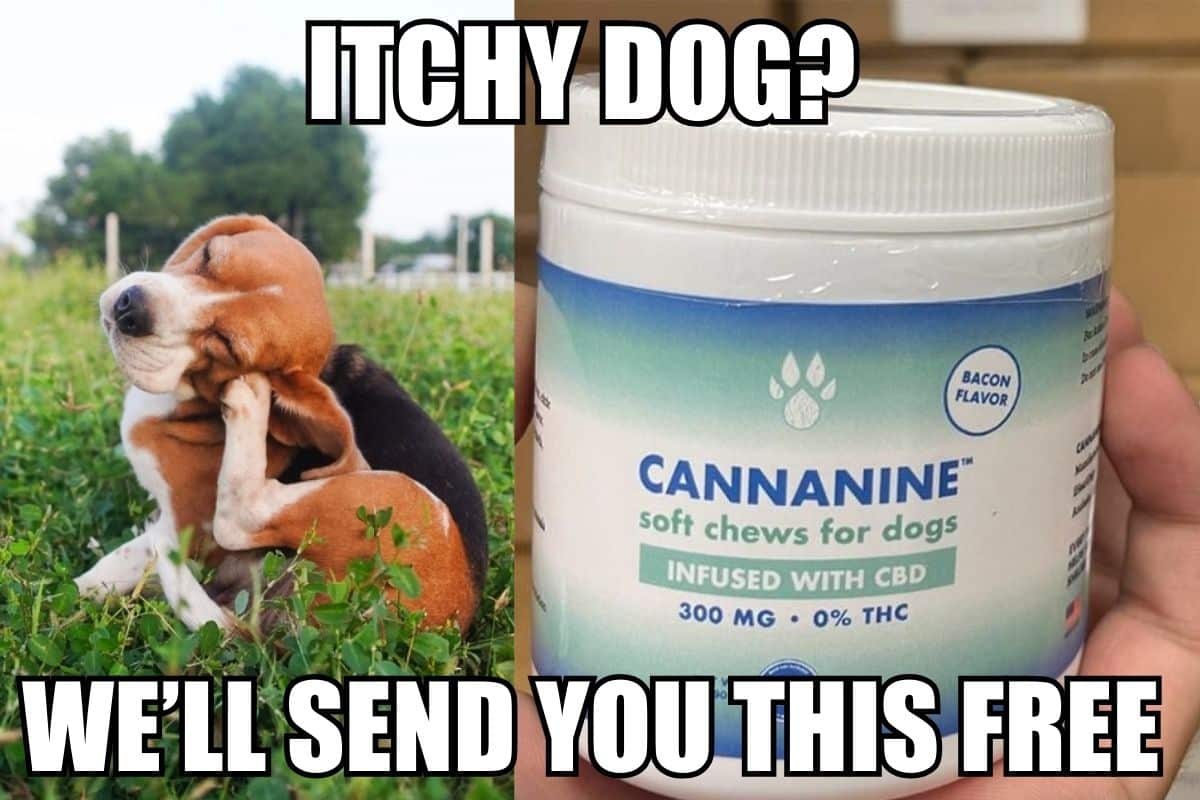
How Much Should I Feed My Dog?
Proper dog nutrition is crucial for supporting your four-legged friend’s overall health and ensuring they live their happiest and fullest lives. A nutritious diet goes beyond providing your furry friend with a balanced diet. It includes feeding your dog at the right times and in the correct portions.
While it’s easy to know the proper nutrients to include in your dog’s food and how often you should feed them, it can be challenging to figure out the right portions. That’s because it requires pet owners and veterinarians to consider multiple factors.
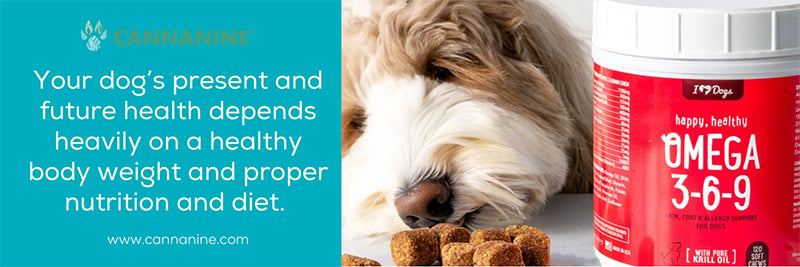
The main seven factors that determine how much food your dog should be eating include:
- Age
- Type of food
- Lifestyle and level of activity
- Breed and size requirements
- Dog’s weight
- Health condition
- Environmental variables
These factors make it impossible to have a one-size-fits-all food portion for all dogs.
In this effect, we will look at each factor to determine how much food your dog should eat.
Factor #1: Your Dog’s Age
Puppies typically need more food than adult dogs. That’s because puppies need food to develop a healthy foundation for future growth and development. On the other hand, adult dogs eat up to 20% fewer calories as they only need food to maintain their health.
To satisfy their nutritional needs, growing dogs need small but more frequent feedings throughout the day.
For example, puppies below four months require tiny meals throughout the day to supplement their mother’s milk. Once they have fully transitioned to solid food, they need at least 3-4 meals a day.
Conversely, feed adult dogs two meals containing low-fat and low-calorie food a day to maintain their ideal weight. However, dogs undergo metabolic changes and may lose weight as they grow older.
As a result, older dogs benefit from a little less food compared to healthy adult pups. Yet their diet needs to have a high fat and calorie content and should be more palatable to appeal to their diminished sense of taste and smell.
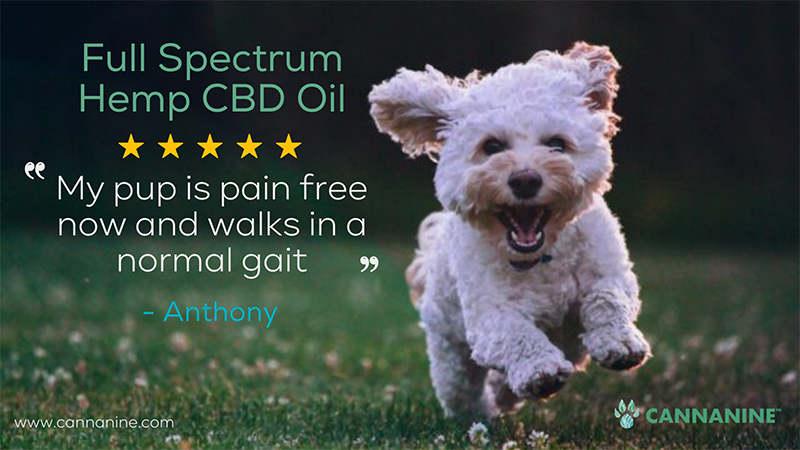
Factor #2: Their Breed and Size Requirements
A rule of thumb: the bigger your dog, the more they need to eat.
This is simply because large dog breeds have more energy requirements compared to smaller dog breeds.
On the other hand, small breed dogs may need more calories per cup due to their higher metabolic rates.
The table below illustrates how much food your dog needs per day, depending on its breed.
| DOG SIZE | WEIGHT | CUPS PER DAY |
| Toy breeds | 3-6 pounds | ⅓ – ½ |
| Small breeds | 10-20 pounds | ¾ – 1 ½ |
| Medium breeds | 30-50 pounds | 1 ¾ – 2 ⅔ |
| Larger breeds | 60-100 pounds | 3 – 4 ½ |
| Extra-large breeds | 100+ pounds | ⅓ more than the large breed portion sizes for every 10 pounds over 100 pounds |
Although this feeding chart is widely applicable, you need to use it as a reference point and not a definitive guide. That’s because some breeds may be the same size and weight but have very different energy needs.
Let’s take an example of Labrador Retrievers that have high body fat to lean muscle mass ratio.
These dogs essentially need less food and energy to maintain their body weight than heavily muscled breeds of the same size. Hence, many dog food brands are now creating breed-specific diets that deliver all the proper nutrients per cup for specific dogs.
Factor #3: The Dog’s Weight
Maintaining your dog’s ideal body weight directly affects their overall health and quality of life. It’s easy to distinguish between dogs that are underweight, overweight, and at their ideal weight.
Here’s a table illustrating the observable features when a dog is above, below, and within its ideal estimated adult weight.
| Weight | Observable Features |
| Underweight |
|
| Ideal weight |
|
| Overweight |
|
Underfed puppies may suffer from stunted growth, while underfed adult dogs may develop nutritional deficiencies. Both are also more susceptible to parasitic and bacterial infections.
Giving your dog too much food and taking them on minimal exercise is a leading cause of obesity.
According to an Association of Pet Obesity Prevention 2018 survey, approximately 56% of dogs in the US are overweight or obese. This is a worrying trend because obesity is a slow and silent killer that brings about numerous health issues.
You can save your dog by increasing their food portions if they are underweight.
Losing weight for overweight or obese dogs involves reducing food portions while maintaining the same feeding schedule.
Expert tip: It’s best to consult a veterinarian before increasing or decreasing your furry friend’s food portions. This is the only definite way to ensure they continue getting sufficient nutrients even after portion changes.
Factor #4: Your Dog’s Activity Level and Lifestyle
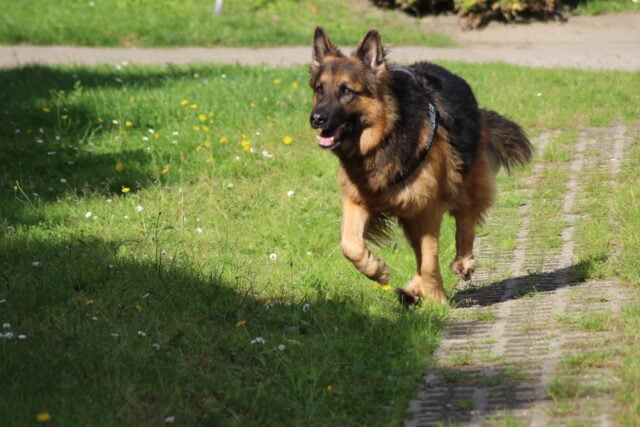
Your dog’s normal energy requirements determine how much food they need to sustain them daily. Some of the standard energy requirements that affect how much your dog eats include growth, exercise, pregnancy, and lactation.
As mentioned earlier, puppies eat more food to ensure their bodies are supplied with sufficient energy for growth and development.
Active dogs that get lots of daily exercise by walking, running, or hiking burn more calories during the day and thus, need more food and calories to meet their energy needs. This also applies to hunting or herding dogs that have a very active lifestyle.
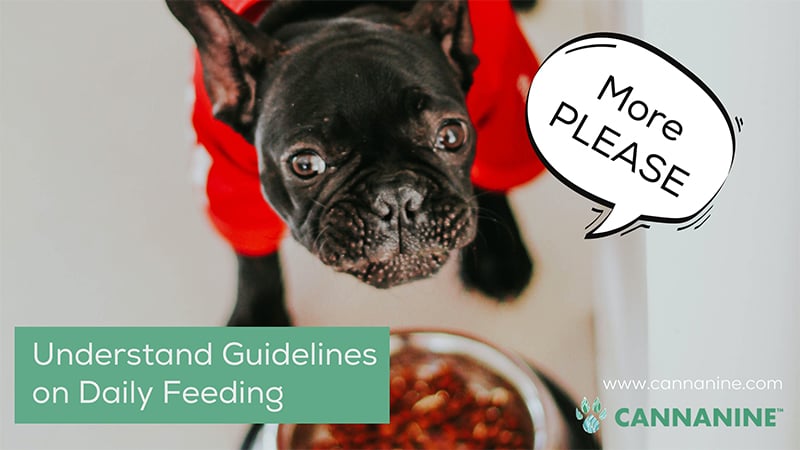
Pregnant or lactating pups need more calories because of their increased energy needs and altered basal metabolism. The amount of food and calories lactating mothers need increases with the number of puppies they have.
Additionally, dogs that produce lots of milk with a high fat and protein content also need more food to satisfy their lactating puppies.
Heavy lactation reduces when healthy puppies turn four weeks, after which lactating mothers can reduce their daily food intake.
Please note: your dog’s energy requirements due to physical activity are also affected by their age, size, and weight.
Factor #5: Dog’s Health Condition
Dogs are known to be serial food lovers and will constantly beg for more. However, there are times you will notice your dog is feeding less or significantly more.
Although it’s not an immediate cause of alarm, it may become one when they go for too long without food.
Some of the health conditions that affect how much your dog eats include:
- Illness: Medical conditions, such as cancer, allergies, infections, and diabetes, result in appetite loss and make your dog eat less.
- Medication side effects: Nausea, vomiting, and diarrhea are all common side effects of prescription medications that may make your dog lose their appetite and eat less.
- Stress or anxiety: May cause digestive upsets and loss of appetite.
- Spaying or neutering: Changes your dog’s hormone balance and reduces their energy and metabolic requirements. It also slows down your dog’s activity levels, which requires you to cut back on their diet portions to help them maintain a healthy weight.
Although they have lost their appetite, sick dogs need additional nutrition to stay healthy. You can help them eat better and more by adding CBD to their daily food routine.
CBD is a hemp-derived cannabis extract with multiple health benefits for pets, including boosting their appetite and relieving nausea.
Cannanine’s Ultra-Premium Hemp Oil is great for dogs suffering from many health conditions, including cancer, osteoarthritis, and allergies.
If you want your sickly dog to eat more, adding a few drops of Cannanine CBD oil to their food or dog treats will trigger immune responses in your pet’s body and also stimulate their appetite.

Factor #6: The Type of Dog Food You’re Giving Them
The correct food portions also vary depending on the type of dog food you’re feeding your furry friend. There are three common types of dog foods many pet owners like to give their pets:
- Dry dog food (kibble) contains 6 to 10% moisture
- Semi-moist dog food has a 15 to 30% moisture content
- Wet or canned dog food contains at least 75% moisture
These different types of food vary in calorie content and thus cannot be swapped. For instance, wet dog food is superior due to its rich fat and protein content and fewer carbohydrates. As a result, it’s more filling and takes up a large portion of your dog’s feeding bowl.
Dry dog diets are popular because they support your pet’s oral health, are cheaper, and are more convenient. As dry dog food is easier to measure and has a longer shelf-life, it’s the best option if you plan on feeding your dog small portions throughout the day.
You can provide your dog with the best of both worlds by mixing the wet and dry kibble in the correct portions. We recommend a third of wet dog food for two-thirds of dry food.
Do Treat Calories Determine How Much Food I Give My Dog?
Yes, because unbeknownst to many dog owners they also boost your pet’s daily caloric intake.
Dog treats are considered an essential part of a dog’s diet. They help dogs maintain their overall health, build strong immunity, aid in training, and boost their energy.
Unfortunately, feeding your dog too many treats could lead to them being overweight or obese.
As a result, it’s essential to account for the caloric content of dog treats when calculating how much you should feed your dog. To find how many calories are in your dog’s treats, you should check the product label.
Cannanine CBD meatballs are delicious and nutritious treats made from nutrient-dense organ meat and Texas beef. They contain 150mg of CBD per bag to help your dog maintain optimal health and have 0% THC content.
There are many reasons to love Cannanine products other than taste and nutrition. These include
- The products are made by a veteran-owned company based in the USA.
- Every batch of products is third-party lab tested.
- A significant portion of profits from every purchase goes towards feeding needy shelter dogs.
- Cannanine offers a money-back guarantee.
- All their products are free of GMOs, THC, heavy metals, yeast, mold, harmful bacteria, and other toxins.

Expert tip: Apply the“10 Percent” rule when administering dog treats and other dietary supplements. The rule dictates that the treats and supplements must not exceed 10 percent of your dog’s daily caloric intake.
Factor #7: Environmental Variables
Environmental factors, such as temperature, humidity, terrain, and elevation affect your dog’s eating habits and dietary requirements.
When we look at temperature, a dog’s metabolic requirements increase with lower temperatures. Thus, they may need two or three more times their average intake to help maintain their body temperature.
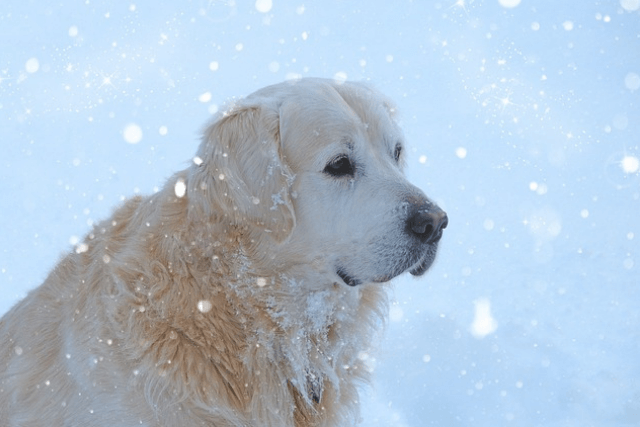
Hot and humid weather also alters how much energy your dog needs to stay healthy and regulate its body temperature. We’ve observed that active dogs, such as hunting and training dogs, may lose their appetite when it’s very hot.
It’s not that they don’t need the extra calories, but they just feel like eating less. As such, we recommend providing them with smaller portions spread throughout the day.
Expert tip: It’s critical to keep your dog hydrated in hot and cold weather. It helps control their body temperature and prevent overheating in hot weather versus hypothermia in cold weather.
Your dog’s food and energy requirements also increase in environments that require them to work harder, such as rough or elevated terrains.
Frequently Asked Questions
How to Determine the Correct Portion Sizes for Your Dog?
There are several steps you need to take when determining the perfect portion sizes for your dog.
- Account for all of the above factors.
- Look at the feeding chart on your dog’s food label. Remember, the portions recommended on the charts are for 24 hours, so you need to divide them by how often you feed your dog per day.
- Determine your dog’s body condition score (BCS) with the help of a vet to determine the appropriate calorie amount for your dog’s intake.
- Monitor and record your dog’s weight changes every 2-4 weeks. Consider adjusting the amount of food you’re giving your dog if you notice any inappropriate weight gain or loss.
- Repeat the process when changing dog food formulas due to the differing calorie amounts in different dog foods.
Does Your Dog’s Feeding Schedule Determine How Much They Need to Eat?
Yes, your dog’s feeding schedule does determine how much they eat. That’s because dogs, much like babies, are creatures of habit, meaning they thrive on routines.
As a result, they require specialized feeding schedules that provide them with the security and predictability of a routine.
Puppies need to be fed multiple times a day, which means these meals can be smaller than what you feed your adult dogs. Older dogs need more food but at more extended intervals to allow for stable metabolism and quick digestion.
How Effective is a Dog Feeding Chart?
Dog feeding charts are not very effective in determining how much you need to feed your furry friends. However, they’re a good starting point when trying to decide how much food your dog needs.
The feeding chart is a set of feeding instructions provided by dog food manufacturers. They’re formulated based on dog ages and weight.
You can find them at the back of dog food containers. Each brand uses its own unique layout, and the recommended feeding amounts on the charts differ in terms of calorie formula and contents.
Their effectiveness is impaired by a dog’s individual dietary needs.
How Can I Ensure My Adult Dogs Eat Slowly?
There are various ways to slow down your dog during meal times:
- Using a raised bowl to feed large and medium-sized dogs minimizes the air they swallow while eating.
- A treat dispenser helps to release treats slowly
Purchasing slow-feeder bowls with maze-like patterns gives them a challenge during mealtime and effectively slows them down.

You don’t want your dog eating too fast because they risk swallowing air, which leads to bloating and other gastrointestinal issues.
How Do I Keep My Dog Full Between Meals?
To avoid being fooled into feeding your dog when they don’t need it, here are a few things you can do throughout the day to keep them satisfied.
- Keep them distracted with exciting activities, like walks or exercise. This helps to ensure they don’t keep thinking about food.
- Avoid kibble with air or wet dog foods with lots of water in them. These fill your fur baby fast but also make them feel hungry in no time.
- Feed them a fiber-rich diet because it takes longer to digest and keeps them full for longer.
- Give them healthy processed treats or unprocessed treats, like boiled carrots, broccoli, and raw cucumbers.
Dogs will often beg for food even when they aren’t hungry. Unfortunately, their adorable eyes will always fool you, and you may end up overfeeding them.
Share with your friends on Pinterest:




